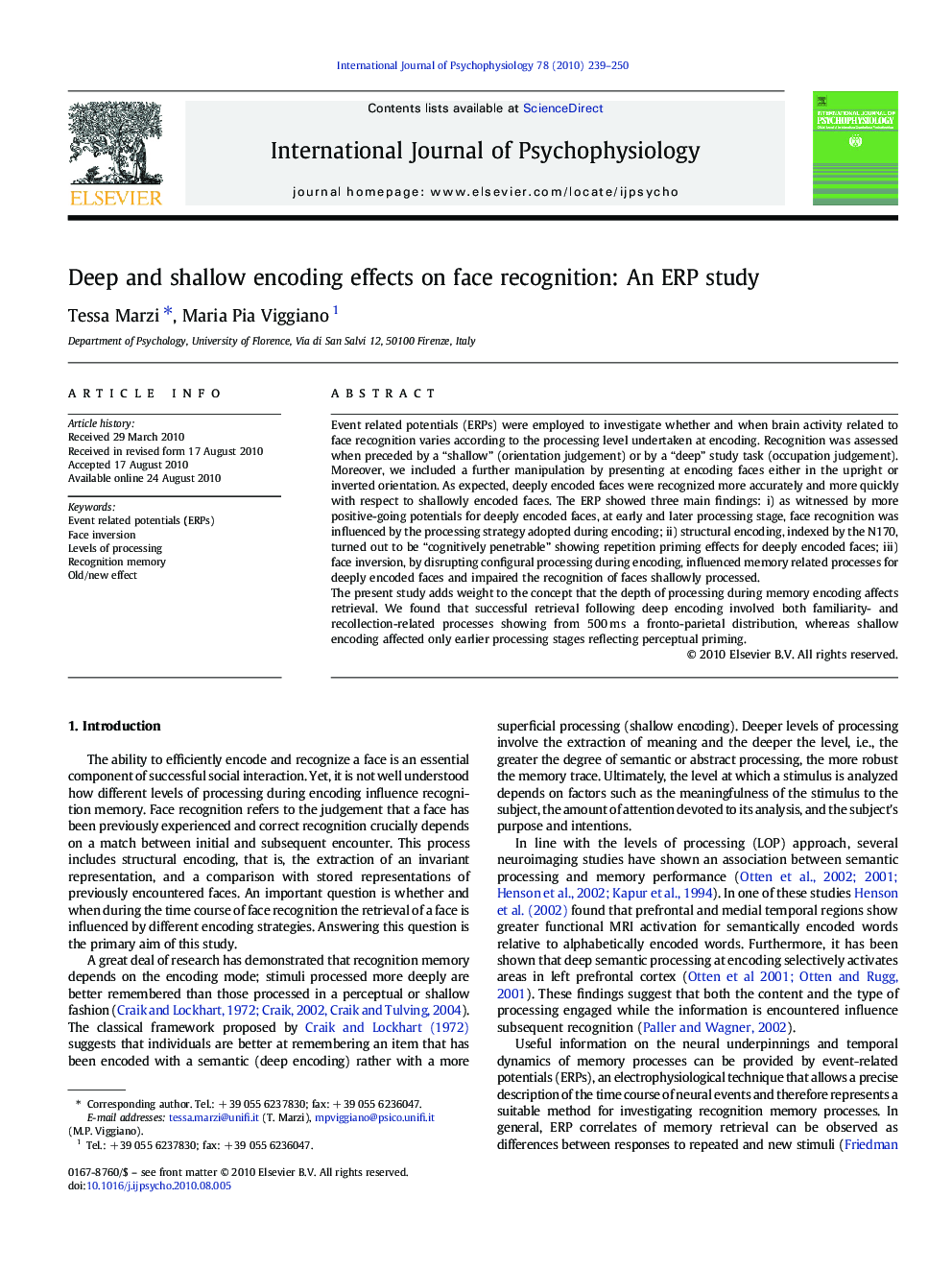| Article ID | Journal | Published Year | Pages | File Type |
|---|---|---|---|---|
| 931440 | International Journal of Psychophysiology | 2010 | 12 Pages |
Event related potentials (ERPs) were employed to investigate whether and when brain activity related to face recognition varies according to the processing level undertaken at encoding. Recognition was assessed when preceded by a “shallow” (orientation judgement) or by a “deep” study task (occupation judgement). Moreover, we included a further manipulation by presenting at encoding faces either in the upright or inverted orientation. As expected, deeply encoded faces were recognized more accurately and more quickly with respect to shallowly encoded faces. The ERP showed three main findings: i) as witnessed by more positive-going potentials for deeply encoded faces, at early and later processing stage, face recognition was influenced by the processing strategy adopted during encoding; ii) structural encoding, indexed by the N170, turned out to be “cognitively penetrable” showing repetition priming effects for deeply encoded faces; iii) face inversion, by disrupting configural processing during encoding, influenced memory related processes for deeply encoded faces and impaired the recognition of faces shallowly processed.The present study adds weight to the concept that the depth of processing during memory encoding affects retrieval. We found that successful retrieval following deep encoding involved both familiarity- and recollection-related processes showing from 500 ms a fronto-parietal distribution, whereas shallow encoding affected only earlier processing stages reflecting perceptual priming.
Research Highlights►Face recognition is influenced by the depth of processing during encoding. ►Repetition priming effects on the N170 component for faces encoded deeply. ►Shallowly studied faces activate early implicit memory processes. ►Late ERP components show enhanced amplitudes for faces processed deeply. ►Inversion affects recognition as a function of levels of processing at encoding.
